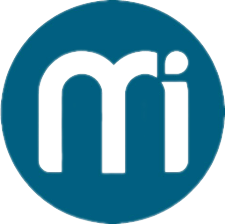How Changes in Workforce Size Impact Organizational Performance

The workforce is the backbone of every organization. From startups with small teams to multinational corporations with thousands of employees, the size and structure of the workforce play a vital role in shaping productivity, culture, and long-term growth. However, when workforce size changes—either through expansion, downsizing, or restructuring—organizations often experience significant shifts in performance.
Much like evaluating the value of professional training programs such as IOSH MS for safety and management development, leaders must carefully assess how workforce size adjustments align with strategic goals. Done well, such changes can unlock growth opportunities; done poorly, they can disrupt morale and hinder results.
Why Organizations Adjust Workforce Size
Workforce changes are rarely random. They usually respond to internal or external factors shaping the organization’s needs. Some common reasons include:
-
Business growth: Expansion often requires hiring more employees to meet demand.
-
Economic pressures: Financial challenges may force companies to downsize.
-
Technological advancements: Automation and digital tools can reduce the need for certain roles.
-
Regulatory compliance: Adjustments may be required to meet health, safety, or legal standards.
-
Restructuring: Mergers, acquisitions, or internal realignments often reshape workforce structure.
Positive Impacts of Workforce Growth
1. Increased Productivity and Output
Adding employees can boost capacity, reduce workloads, and allow teams to deliver projects more efficiently. A larger workforce also supports specialization, where employees focus on tasks aligned with their expertise.
Example: A manufacturing company hiring more assembly-line workers can scale production while reducing overtime fatigue for existing staff.
2. Enhanced Innovation and Creativity
A diverse and expanded workforce brings fresh perspectives and ideas. With more people contributing, organizations often generate innovative solutions to complex problems.
Case in point: Tech giants like Google and Microsoft credit workforce diversity and expansion as key drivers of their innovation culture.
3. Better Customer Service
With more employees, organizations can provide faster response times, personalized service, and round-the-clock support. This directly impacts customer satisfaction and loyalty.
Challenges of Workforce Expansion
While growth is often positive, it comes with hurdles that can affect organizational performance.
-
Increased Costs: Salaries, benefits, and training programs rise with workforce size.
-
Communication Gaps: Larger teams often struggle with miscommunication and silos.
-
Cultural Shifts: Maintaining a cohesive culture becomes harder as teams expand.
-
Management Complexity: Supervising and coordinating more employees demands stronger leadership skills.
The Impacts of Downsizing
On the flip side, workforce reductions can also reshape performance—sometimes positively, but often with serious risks.
1. Short-Term Cost Savings
Reducing staff immediately lowers payroll expenses, which can stabilize finances during crises.
2. Risk of Lower Morale
Employees who remain after layoffs may feel insecure, demotivated, or overworked, negatively impacting performance.
3. Knowledge Loss
When experienced workers leave, they take with them valuable institutional knowledge that can’t easily be replaced.
4. Decline in Customer Service
Fewer staff can lead to slower service delivery, impacting reputation and customer trust.
Workforce Restructuring: Finding the Balance
Sometimes, organizations neither grow nor shrink in size but instead restructure their workforce. This means redistributing roles, responsibilities, or hierarchies to optimize efficiency.
Benefits of Restructuring
-
Aligns employees with new business strategies.
-
Reduces duplication of effort across teams.
-
Encourages agility in responding to market shifts.
Risks of Restructuring
-
Creates temporary uncertainty for employees.
-
Can lead to initial productivity dips during the adjustment phase.
Table: Impacts of Workforce Size Changes
|
Workforce Change Type |
Positive Impacts |
Potential Challenges |
|
Expansion |
Higher output, innovation, customer service |
Higher costs, communication issues |
|
Downsizing |
Lower expenses, streamlined roles |
Low morale, knowledge loss, poor service |
|
Restructuring |
Strategic alignment, agility |
Employee uncertainty, short-term dips |
How Workforce Size Impacts Key Performance Areas
1. Productivity
-
Larger teams can improve efficiency but risk inefficiency if not well-coordinated.
-
Smaller teams may work faster with less bureaucracy but can burn out from heavy workloads.
2. Employee Morale
-
Expansion provides growth opportunities but may dilute recognition and engagement.
-
Downsizing often leads to stress and anxiety for both departing and remaining employees.
3. Financial Performance
-
Growth supports higher revenue generation but increases fixed costs.
-
Downsizing reduces costs in the short run but can harm long-term profitability if service quality drops.
4. Organizational Culture
-
Expanding teams must focus on maintaining core values.
-
Restructuring requires strong communication to preserve trust.
Real-World Example: Workforce Changes in Tech
During the global pandemic, many tech companies rapidly expanded their workforce to meet surging online demand. However, in 2023, several of these companies—like Meta and Amazon—downsized when growth slowed.
Result:
-
In the short term, layoffs saved costs.
-
In the long term, the morale dip led to performance challenges, sparking public criticism and reduced employee trust.
This demonstrates how workforce changes, if not strategically managed, can have ripple effects across performance and brand reputation.
Best Practices for Managing Workforce Size Changes
To minimize risks and maximize benefits, organizations should adopt thoughtful strategies when adjusting workforce size.
1. Align with Strategy
Ensure workforce adjustments directly support business goals, not just short-term fixes.
2. Prioritize Communication
Be transparent with employees about the reasons for changes, expected outcomes, and available support.
3. Offer Training and Development
During expansions or restructuring, provide skill-building opportunities so employees adapt smoothly to new roles. Programs like IOSH MS can help managers improve leadership and safety management skills during transitions.
4. Monitor Employee Wellbeing
Use surveys, one-on-one meetings, and support systems to address morale issues early.
5. Conduct Risk Assessments
Evaluate how changes affect not just performance but also safety, compliance, and operational risks.
Preparing for the Future of Work
Workforce dynamics are evolving rapidly. Automation, AI, and flexible work arrangements are reshaping workforce size and structure across industries. Organizations that proactively plan and manage these changes will be more resilient and competitive.
Investing in leadership training, employee engagement, and long-term skills development will ensure that workforce adjustments enhance performance rather than disrupt it.
Understand the factors that influence IOSH Certificate Fee worldwide.
Conclusion
Changes in workforce size—whether through expansion, downsizing, or restructuring—have a direct and lasting impact on organizational performance. While growth can boost productivity and innovation, it also brings challenges of cost and communication. Downsizing may stabilize finances but risks harming morale and customer service.
The key lies in strategic planning, transparent communication, and investment in people. Just as organizations weigh the value of programs like IOSH MS to develop strong leaders, they must also carefully evaluate how workforce changes align with long-term goals.
Ultimately, performance thrives when workforce size adjustments are managed with foresight, empathy, and a clear vision for the future.
- Art
- Causes
- Crafts
- Dance
- Drinks
- Film
- Fitness
- Food
- Games
- Gardening
- Health
- Home
- Literature
- Music
- Networking
- Other
- Party
- Religion
- Shopping
- Sports
- Theater
- Wellness


